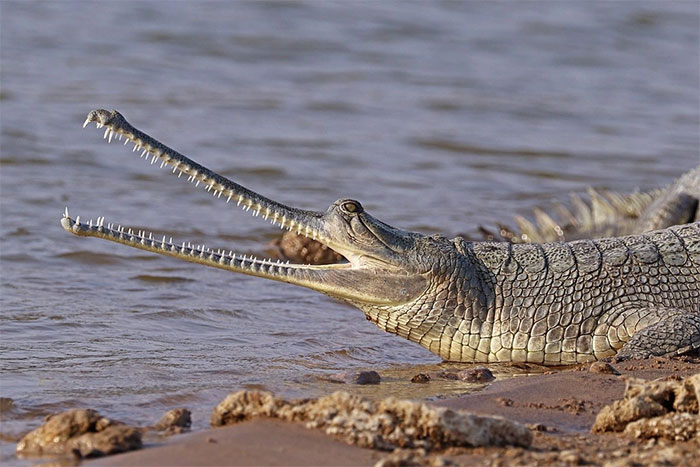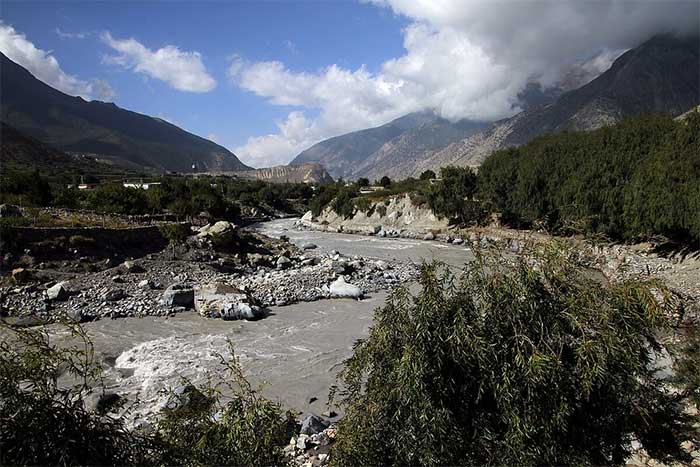Indians strive to save long-snouted crocodiles from the brink of extinction
Along the Gandak River in India, gharial crocodiles are being rescued from the brink of extinction by local people.

The gharial is called a gharial because the male's snout resembles a traditional Indian clay pot called a "gharia." (Photo: Wikimedia Commons)
The long-snouted crocodile is now found only in India and Nepal , and was once widespread in the rivers of South Asia. Due to habitat degradation, hunting, and deaths from fishing nets, the species' numbers have declined dramatically.
According to the International Union for Conservation of Nature (IUCN), in 1946, the Gharial species had 10,000 individuals, by 2006, there were less than 250 individuals left.
Faced with the near extinction of this species, the Indian government and non-profit organizations have implemented conservation, breeding and monitoring programs for long-snouted crocodile nests. Thanks to that, the number of mature individuals in the wild has increased to about 650.

The Gandak River is one of the major rivers in Nepal and a left-bank tributary of the Ganges River in India (Photo: Wikimedia Commons)
The most prominent of these is the Gandak Gharial Rehabilitation Project, which is being implemented in 35 villages along the Gandak River. According to Samir Kumar Sinha, chief ecologist at the Wildlife Trust of India (WTI), the Gandak Riverbanks have a rich system of marshes and sand dunes that are ideal habitats for the gharial.
Local farmers and fishermen have become caring parents for the crocodiles, volunteering to monitor nests, monitor activity and assist in population surveys.
"In April, people hold picnics on the riverbank to celebrate the first sighting of a mother crocodile laying eggs," said Jitendra Gautam, a crocodile nest keeper in Chilwania village in Pashchim Champaran district.
Villagers monitor each nest, which contains 35 to 50 eggs, and if they see a nest in danger of being swept away by the water, they move it to a safer location. Each egg is marked, covered with sand and netting to protect it from predators.
In mid-June, the baby crocodiles are born and carefully released into the river next to their mother. A ceremony is held to celebrate the birth of the baby crocodiles, with a traditional dish of dahi-chura (a dish consisting of yogurt and rice).

The long-snouted crocodile can grow up to 4.5 metres long and weigh up to 900 kilograms. (Photo: ZSSD/Minden).
Mr. Lalasha Yadav, a farmer in Lediharwa village, West Champaran district, emotionally shared: "We are extremely happy every time we see the little babies sticking their slender snouts out of the eggs."
This conservation project not only helps to restore a rare reptile species but also connects the local farming and fishing communities. In the context of climate change and environmental degradation, the need to work together to conserve rare animals is becoming more and more necessary.
- Crocodile extremely endangered reproduction after two years of pairing
- Frogs are standing on the brink of extinction
- Sumatra elephants are standing on the brink of extinction
- Vietnamese gibbons on the brink of extinction
- The world's largest gorilla stands on the brink of extinction
- Interesting things about crocodiles
- What factors help crocodiles survive an extinction event?
- 7 secrets to help Indians stay healthy and young for a long time
- Perspective of mass extinction like dinosaurs
- The earth warms up to make the alligators suffer.
- Pollinated species on the momentum of extinction
- Short-snouted dolphins have the ability to 'talk' with harpoons of different species
 Animal 'suffering' after hibernation
Animal 'suffering' after hibernation Why do goats climb well?
Why do goats climb well? Scientists were surprised to see chimpanzees eating turtles
Scientists were surprised to see chimpanzees eating turtles Giant catfish died deadly due to drought in Thailand
Giant catfish died deadly due to drought in Thailand